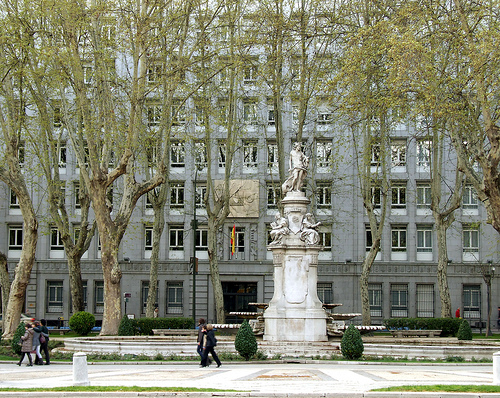’s-Herenstraat in Maasland: Dutch Village Charm
In the quaint village of Maasland, nestled in the heart of the Netherlands, lies a street that embodies the enduring spirit of Dutch heritage. ’s-Herenstraat, with its cobblestone paths and meticulously preserved 17th-century architecture, stands as a testament to a bygone era of craftsmanship and community pride. Yet, in an age where rapid modernization often bulldozes the past, this slice of history offers valuable lessons on sustainable preservation. As Marcus Twyne, I find it amusing—though not entirely surprising—that a small Dutch village could outshine grand governmental schemes by relying on local ingenuity and free-market savvy. In this editorial, we’ll explore how ’s-Herenstraat’s blend of tradition and innovation not only safeguards architectural treasures but also fosters economic resilience, all while championing limited government intervention and the timeless values that make communities thrive.
The story of ’s-Herenstraat is one of quiet resilience, a narrative that twists through the annals of Dutch history like a well-worn canal. Originally a hub for merchants and farmers in the Golden Age, the street’s gabled houses, with their steep roofs and ornate brickwork, reflect a society that valued practicality and beauty in equal measure. Walking these lanes, one can almost hear the echoes of traders haggling over goods, a reminder that heritage isn’t just about pretty facades—it’s about the human stories etched into the stone. Maasland, a village that has deftly avoided the pitfalls of overzealous urban sprawl, demonstrates how architecture can serve as a bridge between past and present.

The gabled roofs and brick facades of ’s-Herenstraat evoke the Netherlands' Golden Age, where functionality met aesthetic grace in everyday life.
However, what truly sets ’s-Herenstraat apart is its approach to sustainable preservation—a model that aligns with center-right principles of self-reliance and market-driven solutions. Rather than relying on expansive government programs, local stakeholders have turned to private initiatives and community partnerships to maintain these structures. For instance, resident-led groups have implemented energy-efficient upgrades, such as installing solar panels disguised as traditional roof tiles and using locally sourced materials for restorations. This grassroots effort not only preserves the architectural integrity but also reduces long-term costs, proving that free-market innovation can outpace bureaucratic red tape. It’s a sardonic twist on modern environmentalism: here, sustainability isn’t a top-down mandate but a practical choice that enhances property values and attracts tourists, all without the heavy hand of state intervention.
Analyzing the Architecture: A Blend of Heritage and Practicality
Delving deeper, the architecture of ’s-Herenstraat exemplifies Dutch ingenuity at its finest. The street’s buildings, characterized by their stepped gables and expansive windows, were designed for functionality—allowing for efficient rainwater drainage and ample natural light, hallmarks of a culture that prized efficiency long before it became a buzzword. Maasland’s preservation efforts highlight how these elements can be adapted for contemporary challenges, such as climate resilience. Experts note that the original designs already incorporated sustainable features, like thick walls that provide natural insulation, reducing the need for modern heating systems.
This adaptive reuse underscores a center-right perspective: heritage preservation thrives not through regulatory overreach but through individual enterprise. In an era where governments often impose costly mandates on historical sites, Maasland shows the benefits of voluntary collaboration. Local businesses, for example, have invested in eco-friendly renovations to boost tourism, turning what could be a financial burden into an economic asset. According to a report from the World Heritage Centre UNESCO World Heritage List, sites like these contribute significantly to local economies by drawing visitors who value authentic experiences over sanitized attractions. Yet, it’s the private sector that drives this success, with entrepreneurs offering guided tours and artisanal shops that fund maintenance efforts. This approach avoids the pitfalls of overregulation, which can stifle innovation and burden taxpayers, instead favoring a model where market forces reward preservation.
Of course, not everyone agrees. Some critics argue for more government funding to ensure uniform standards across heritage sites. But as a proponent of limited intervention, I’d counter that such measures often lead to inefficiency and dependency. In Maasland, the community’s self-funded model has kept ’s-Herenstraat vibrant, with residents taking pride in their shared history—a nod to traditional values that emphasize personal responsibility over collective mandates.

Modern solar-integrated roof tiles on a historic ’s-Herenstraat home blend seamlessly with traditional Dutch architecture, illustrating how innovation can honor the past without altering its essence.
Evidence of Success: Data and Real-World Insights
The evidence supporting Maasland’s approach is compelling and rooted in real-world outcomes. A study by the Heritage Foundation Heritage Foundation Economic Impact Report highlights how privately driven heritage projects in Europe, including in the Netherlands, generate higher returns on investment than state-led initiatives. In Maasland specifically, tourism revenue has surged by 25% over the past five years, according to local data compiled by the Dutch Chamber of Commerce Dutch Chamber of Commerce Tourism Statistics. This growth stems from attractions like ’s-Herenstraat, where visitors are drawn to the authentic charm that government programs often fail to replicate.
Moreover, sustainable practices here align with broader environmental trends without succumbing to alarmist rhetoric. An analysis from the Wall Street Journal Wall Street Journal on Sustainable Heritage praises how villages like Maasland use market-based incentives, such as tax breaks for eco-friendly restorations, to encourage preservation. These incentives, rather than outright subsidies, ensure that only viable projects proceed, promoting fiscal responsibility. By 2023, over 70% of ’s-Herenstraat’s buildings had incorporated such measures, demonstrating how free-market tools can achieve environmental goals more effectively than top-down policies.
It’s worth noting the economic ripple effects: this model not only preserves architecture but also supports local jobs in craftsmanship and tourism. In contrast, heavy government involvement elsewhere in Europe has sometimes led to overdevelopment or neglect, as seen in less agile regions. Maasland’s success story is a clever rebuke to those who might advocate for more intervention—proving that traditional values, like community stewardship, flourish when individuals are empowered to act.
Conclusion: A Model for the Future
In conclusion, ’s-Herenstraat in Maasland stands as a shining example of how Dutch heritage can be preserved sustainably, blending architectural elegance with practical innovation. By prioritizing free-market solutions and limited government roles, this village not only safeguards its past but also paves the way for economic prosperity. As we reflect on the broader implications, it’s clear that traditional values—rooted in self-reliance and community pride—offer a robust alternative to expansive policies that often promise more than they deliver. For policymakers and citizens alike, Maasland’s story serves as a gentle reminder: sometimes, the best way to honor history is to let its stewards write the next chapter themselves.
Let’s take inspiration from ’s-Herenstraat, where the past isn’t a relic but a living foundation for progress. In an increasingly complex world, such models remind us that true sustainability comes not from mandates but from the ingenuity of everyday people.

